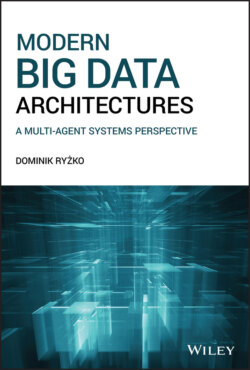Читать книгу Modern Big Data Architectures - Dominik Ryzko - Страница 9
1.2 Assumptions
ОглавлениеWhile establishing the scope and focus of this book, several assumptions and compromises had to be made. Firstly, when describing a field such as Big Data, where new concepts and projects emerge on a daily basis, it is difficult to resist the temptation to include every new finding, so the book will be as up to date as possible at the time of publishing. On the other hand it is difficult to predict the future of freshly proposed solutions, before they become more mature and are hardened by real life applications.
Therefore, difficult choices have been made and some might argue that a particular important architecture, project, or framework has been left out. In general, I have been following the rule of writing about topics, which have some proven maturity, e.g. have become mainstream Apache projects, have been followed by highly cited publications, have been applied by at least one of the large and recognized industry players, etc.
Secondly, since the book title refers to big data architectures, the contents concentrate on large scale solutions capable of solving practical problems experienced in the industry. Therefore, specific tools applicable at particular points in the larger architectures are described only to the point where they are relevant from the point of view of the big picture they take part in, rather than in their internal and technical details. For example Hadoop, which is often regarded as a technological synonym for big data, is described as a component for batch processing used in larger big data architectures. Map-Reduce, Hadoops', underlying algorithm, is presented as one of the generic computational models for processing extremely large data sets. Similarly, Spark is an example of stream processing and plays that role in larger big data setups.
In the field of MAS things have been somewhat easier, since the field is more mature in general and several comprehensive textbooks have been published to date, which summarize the research and development efforts in this area. Therefore, major agent models and architectures are described in line with the state of the art long established in the field. This is complemented with some more recent and more specific examples of applications of multi-agent paradigms in solving various big data problems.
